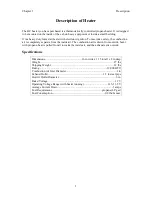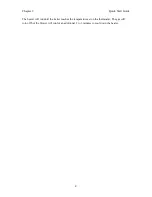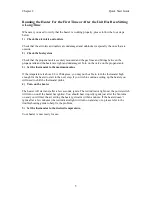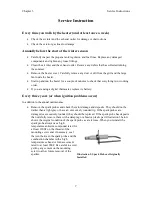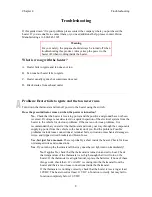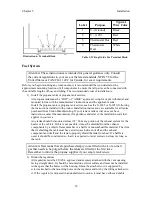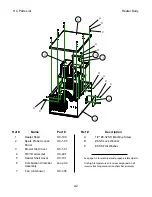
Chapter 2
Quick Start Guide
outside through the combustion air outlet on the bottom heater. The inside air is blown over the
heater exchanger by the fan, where it captures the heat produced by the burning propane. This is
illustrated below.
Near the heater, you will see a thermostat. Please consult the manual that came for the thermostat
for instruction on how to operate it.
A switch, a green indicator light, and a red indicator light are located on the side of the heater
where the gas and the power enter the heater. The switch operates as a emergency off switch; it
disconnects all power to the heater. It should be used when the heater is not needed for an
extended period of time and should not be used for shutting off the heater when it is running or
for day to day operation. For day to day operation, the thermostat should be used instead since it
will allow the heater to safely cool down. The green indicator lights is on when there is power to
the heater and the internal circuit breaker has not tripped. The red indicator light is on when the
safety system has checked out but the heater is either waiting to light or unable to light.
Normal Operation for Heater
When the switch on the heater is off, the propane turned on, and the thermostat set to its
minimum setting, no lights will be on or fans will be running. When the switch is turned on the
green indicator light will come on. If the thermostat is turned up until the heater starts (this will
be unnecessary below 20 F), the blower and fan will start and after a short delay the red indicator
light will come on. After a 15 to 30 second delay, the gas turns on, the red light turns off, and a
faint clicking noise will be heard as the spark module sends a high voltage spark to the spark
probe. The heater will attempt to light for approximately 10 seconds. If the heater lights, the red
light will turn off. If not, the red light will turn back on and the heater will wait 15 to 30 seconds
to try again.
3
Illustration 2: Inside of HC Heater




